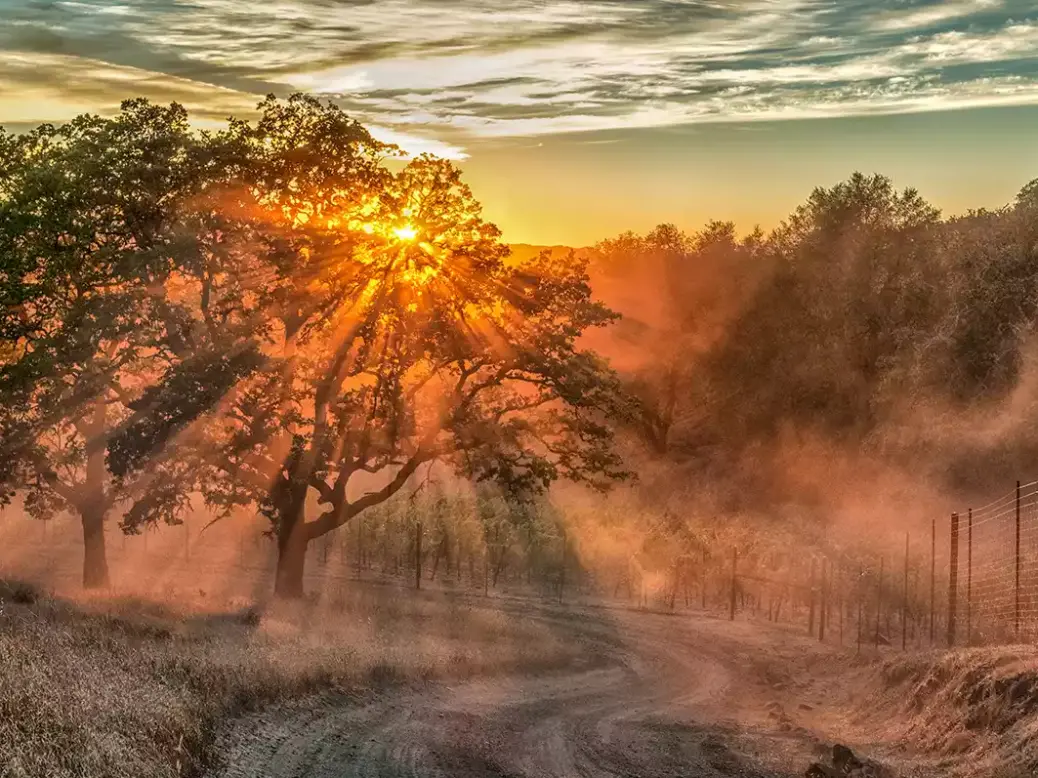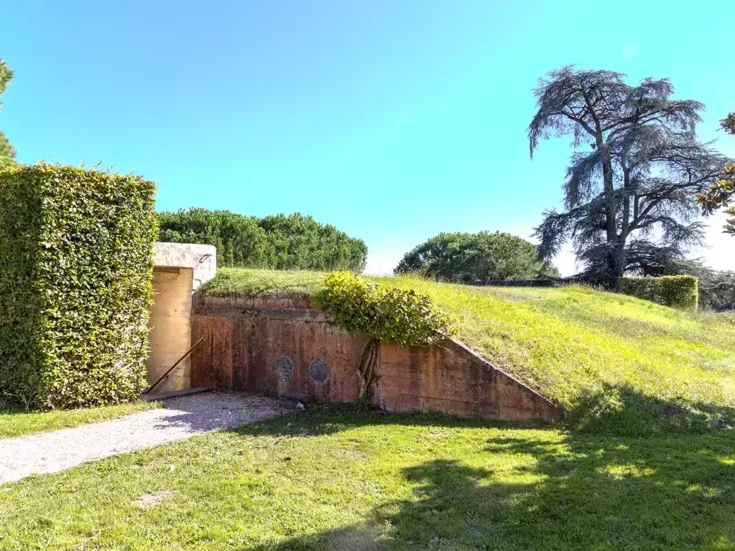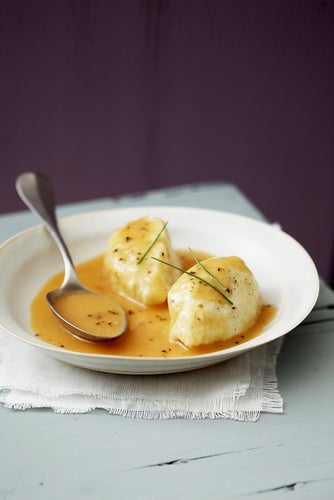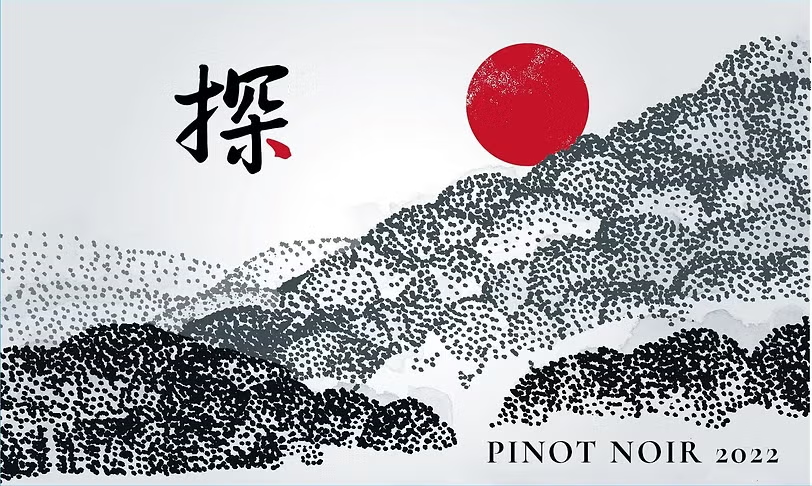
Andrew Jefford is nourished by a very special wine made amid the Pacific fogs of the Russian River Valley by David Ramey.
Pale gold in the glass—but can you see, by the way it moves, that there’s substance and swell, too? Perhaps I’m imagining it. Even so, I’d say we have a white wine here to nourish rather than to brace. The aromas, lifting like steam from a broth, ask you to slow down a little, to check the churn of your hectic life. To wait; to let time dissolve. Scents? There’s a moistness, like rain-damp felt: mossy woodland, wet underfoot. Fresh white nuts, unhusked but still tender from summer’s surge. They smell creamy—though nothing here evokes udders or churns, still less fudge or toffee. Creamed nuts, rather; sap from a cut stem. And it’s everywhere in the glass, abiding. Like a fog.
The valley, wrote Robert Louis Stevenson in The Silverado Squatters (1883), “was gone; gone were all the lower slopes and woody foothills of the range; and in their place, not a thousand feet below me, rolled a great level ocean.” This was the chapter that “the amateur emigrant,” squatting with his new wife in an abandoned mine bunkhouse above Calistoga, devoted to “The Sea Fogs.” They’re the gift, to California’s winemakers, of cold, south-sliding currents and wind-drawn ocean upwellings. Aerial terroir, flooding in under night’s cover through valley corridors; discovered at dawn, which was when RLS gasped at his “great level ocean” from above for the first time, then shrouding the sun through morning hours. Stevenson, a bronchitic Scot, remembered his restless native Hebridean sea fogs, “moaning among the weeds or lisping on the sand.” All, though, was noiseless here: “that vast fog-ocean lay in a trance of silence, nor did the sweet air of the morning tremble with a sound.” Silent, ample, astonishing: aromas in the glass. That precious moment. No hurry; we’ll taste soon.
The Ramey way: Affable from the inside out
These vineyards lie close to the Russian River Valley, which, says David Ramey, “was regarded by Davis viticulturists back in the ’70s as ‘too cold to grow grapes.’” Since then, of course, we’ve had “the march to the coast,” in Ramey’s phrase. Our changing climate is marching California’s winemakers toward the Pacific and its airy heights, into the arms of the fog, though most of the Russian River Valley vineyards still lie 15 miles (24km) or so inland. Joe Rochioli Sr moved in the mid-1930s to what was called Fenton Acres, the site of today’s Rochioli Vineyards—but back then, the ranch grew hops, beans, and prunes. Time is churning in the glass, too, though you can’t see it.
What of the Russians? They’d crossed the Bering Strait, making landfall (the first Europeans in America’s Northwest) in 1746; colonization came in the mid-18th century, with the trading companies of “Russian America.” This was the grand name for their sparse, firelit, smallpox-scattering, coastal communities, an early disaster for Alaska’s indigenous peoples. The Russians were hungry for fur, having overhunted vast Siberia—and the sea-otter pelts of this coast were peerless.
It was Russian fur-trappers in the early 19th century who became associated with the river; they’d trapped and shot their way south from their capital of Novo Arkhangelsk (present-day Sitka) into these Spanish colonial frontier lands, just north of where the Missions stopped. They founded Fort Ross (Fort Rus) on the present-day Sonoma coast in the fateful year of 1812; they settled a second Sebastopol. But they were too far from home. John Sutter bought Fort Ross in 1841, just as the USA’s 24th Secretary of State, William Seward, was to buy Alaska (for $7.2 million) in 1867. The short-lived Bear Flag Republic came into being in Sonoma in 1846, a breakaway statelet from what was, by now, Mexican overlordship; California’s admission as the 31st state came in 1850. Today, both names—Russian River Valley and Fort Ross-Seaview—move around the world as AVAs on bottles of fine Chardonnay. The former is nested within the Sonoma AVA, and the latter within Sonoma Coast AVA. (The Ramey family makes a Fort Ross-Seaview Chardonnay, too, from the Martinelli Charles Ranch. They’ve marched to the coast.)
The Rochioli Chardonnay fills the mouth, just as the aromas had filled the glass, and the fogs (when they will) each coastal valley. There’s a cascade of fruit: citrus, yellow fruits. The nourishment is there, too; those fruits are cream-rounded, textured, flake-filled. The flesh is firm; you feel muscle and sinew beneath the skin. “I care,” says David Ramey, “about what the wine feels like on the palate above all else”—a lesson he brought back from France and from years spent working with Christian Moueix. He says he likes to make wines from the inside out, not the outside in: wild yeast, oxidized juices into barrel warm, with all the lees (and not too much new oak); full malo; fining but no filtering. Vivid white wine, but also expressive, affable, civilized. Wine to spend an afternoon with; it invites and rewards scrutiny, it helps you check the churn. The Russian River Valley, it tells you, is no longer too cold to grow grapes. And—for the time being—not too hot.
There’s lots of Chardonnay in the world, but too little like this. Less and less, oddly enough. Climate demons are haunting us: Apollo, once the winemaker’s friend, is now considered a foe; his gifts may scorch. Everything is nervier today, even in ever-warmer Burgundy. We swirl our glasses fretfully; we feel we’re losing the time inside them. We hurry to pick, to press, to seal, to pour. This wine tells us to wait awhile, to make the most of what we have.






